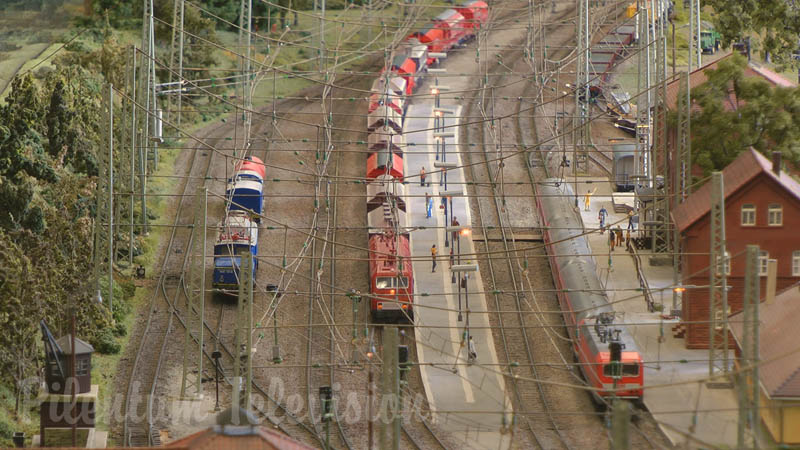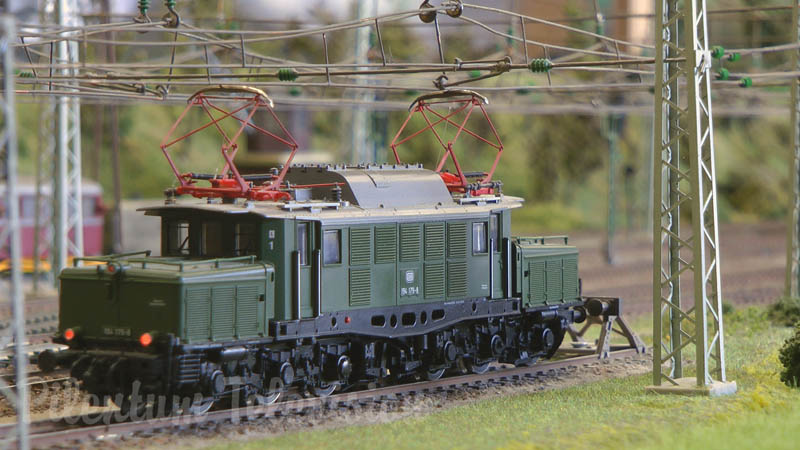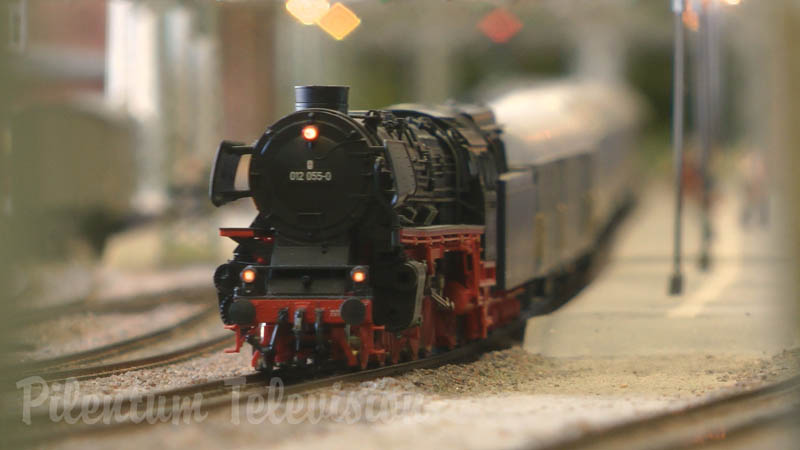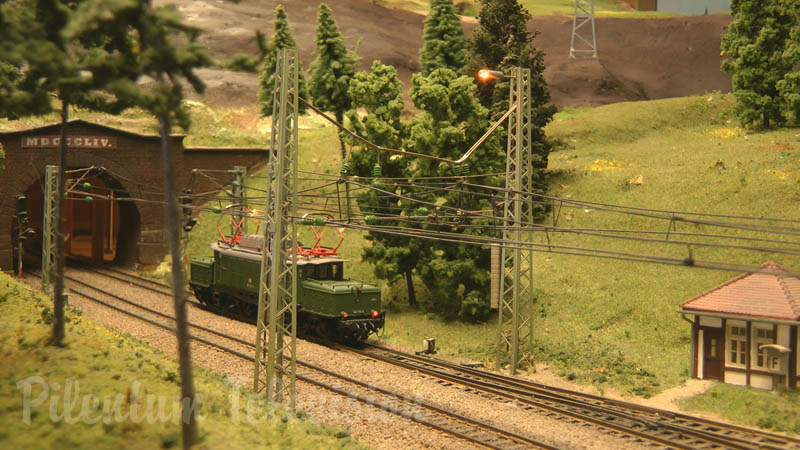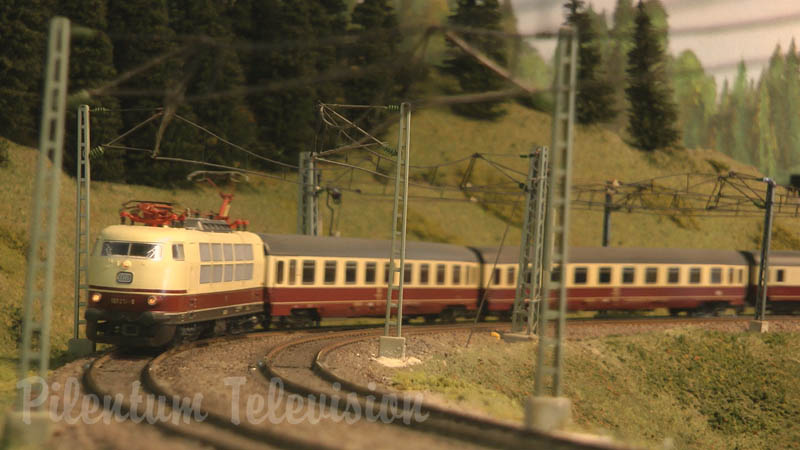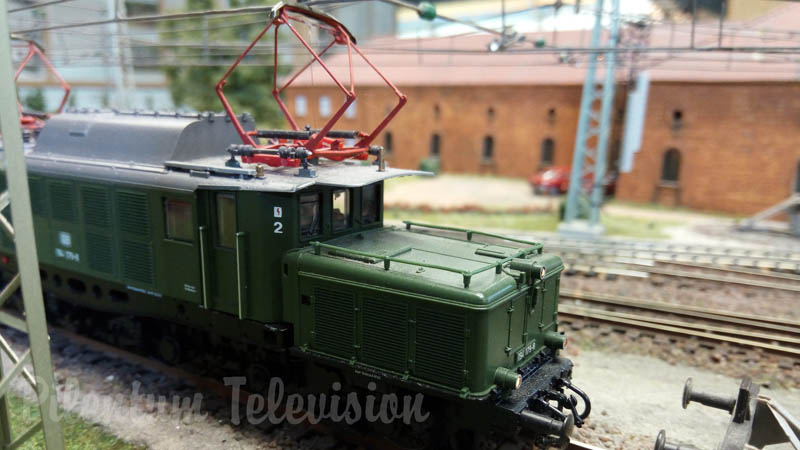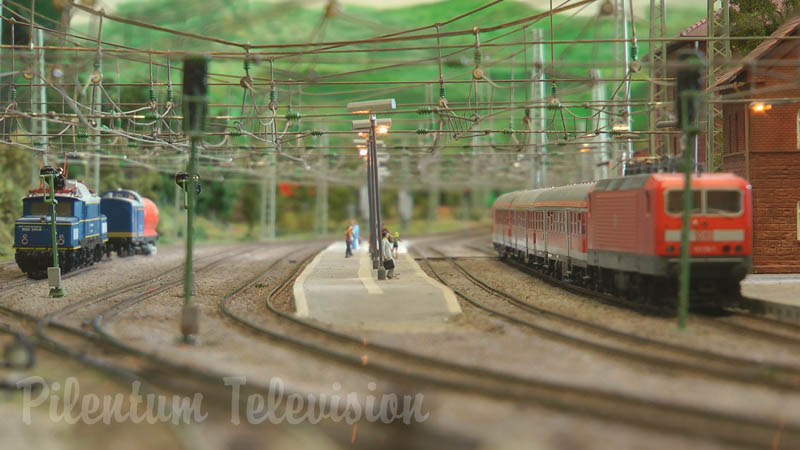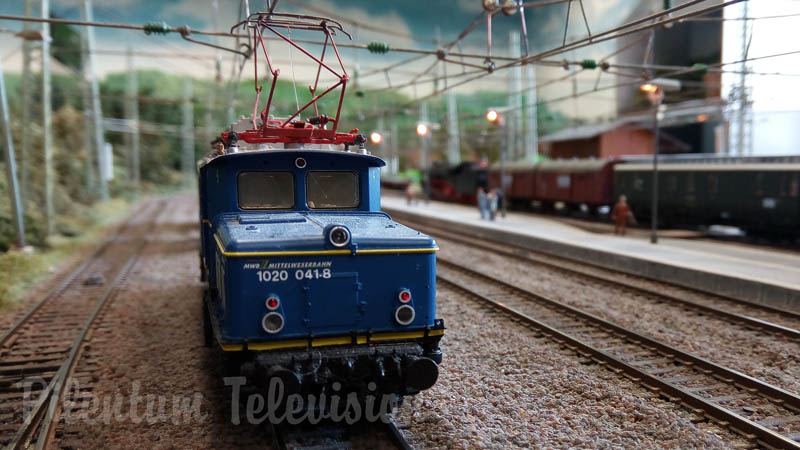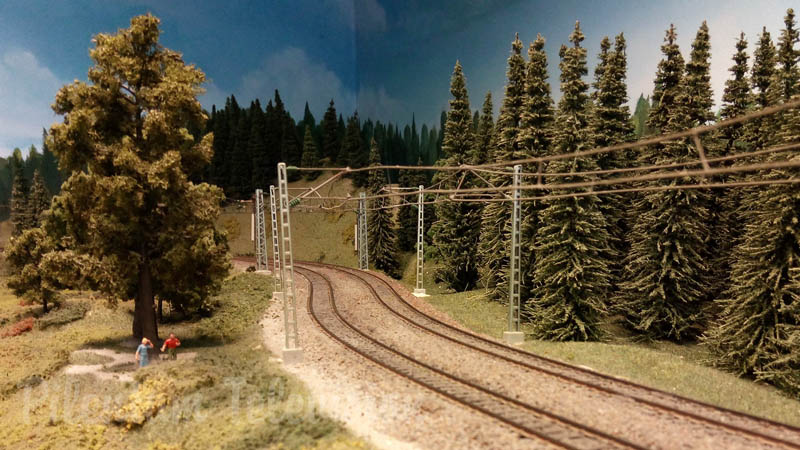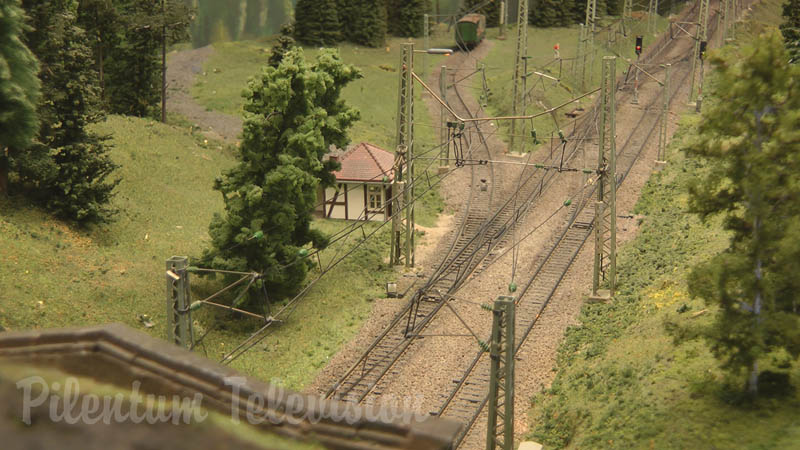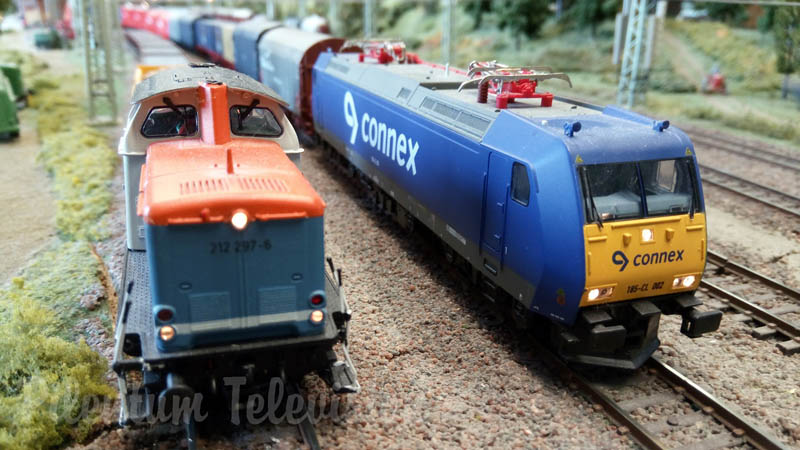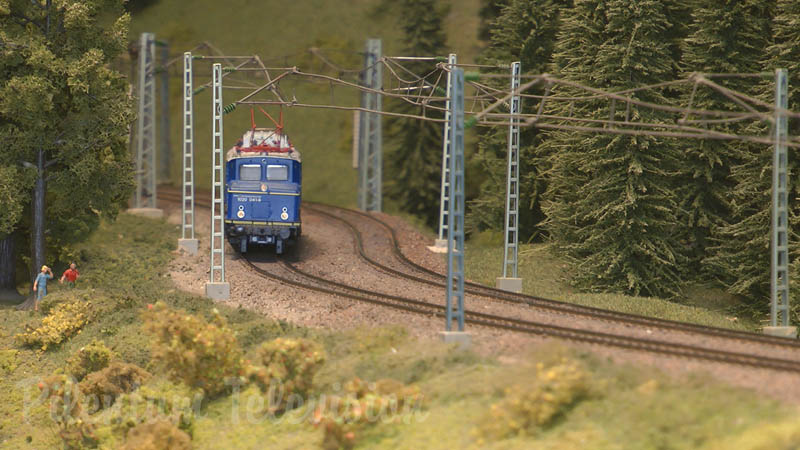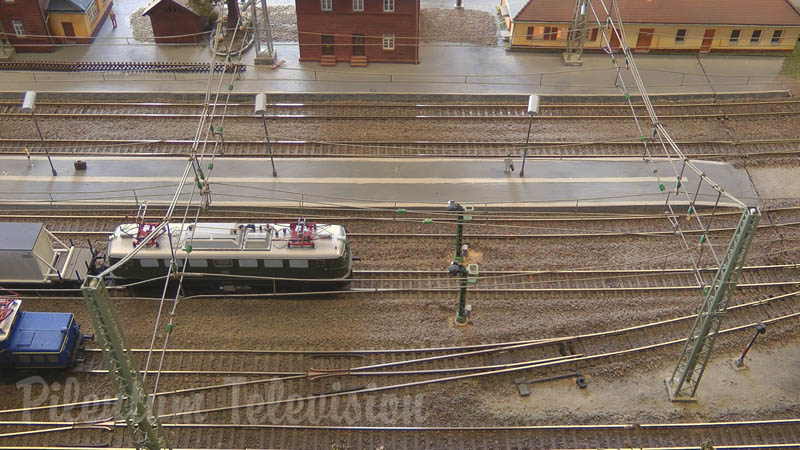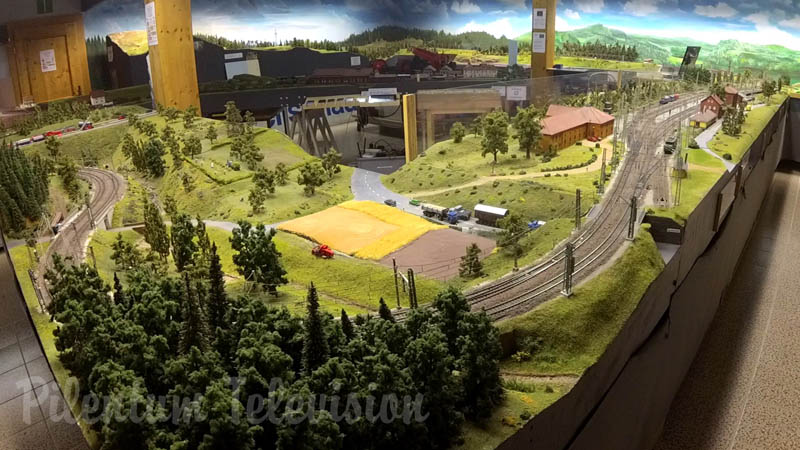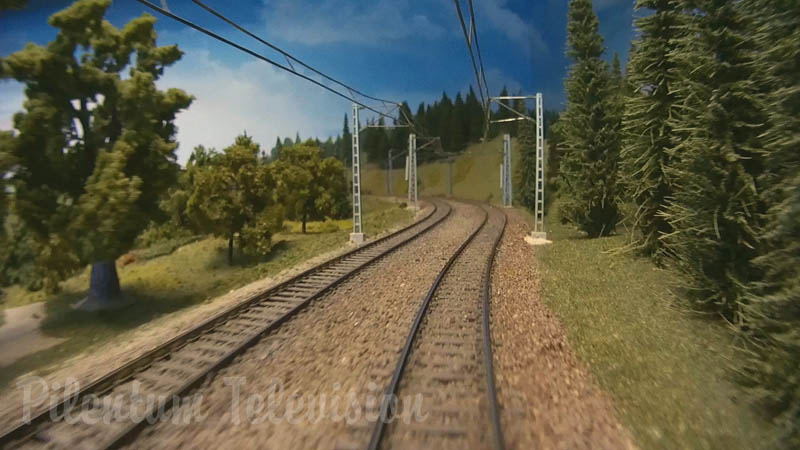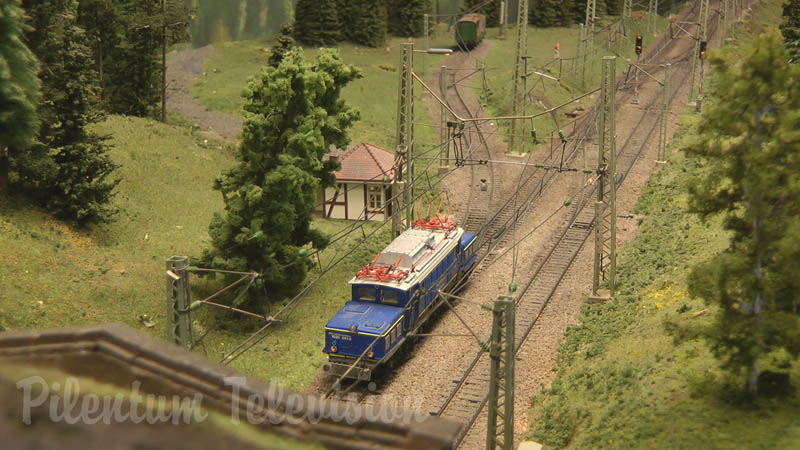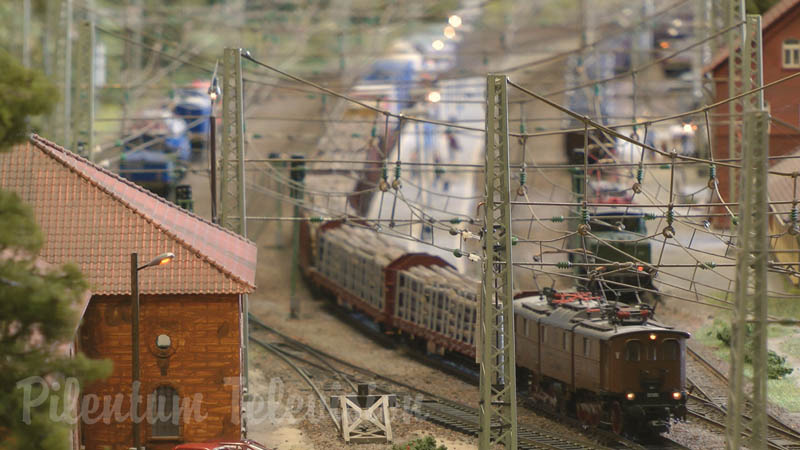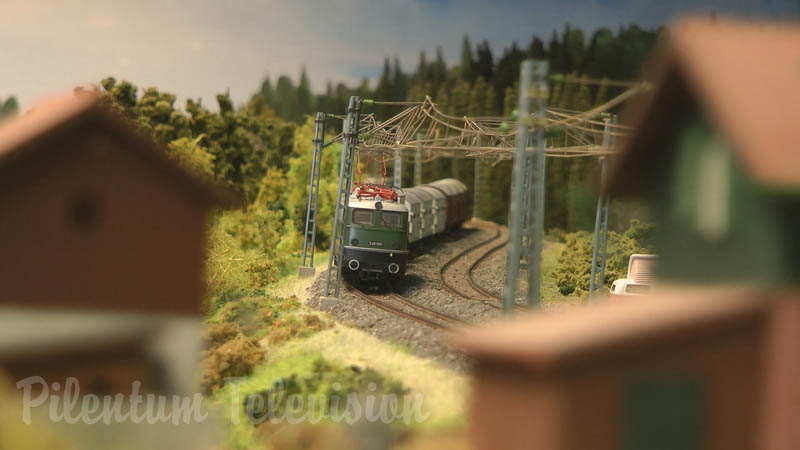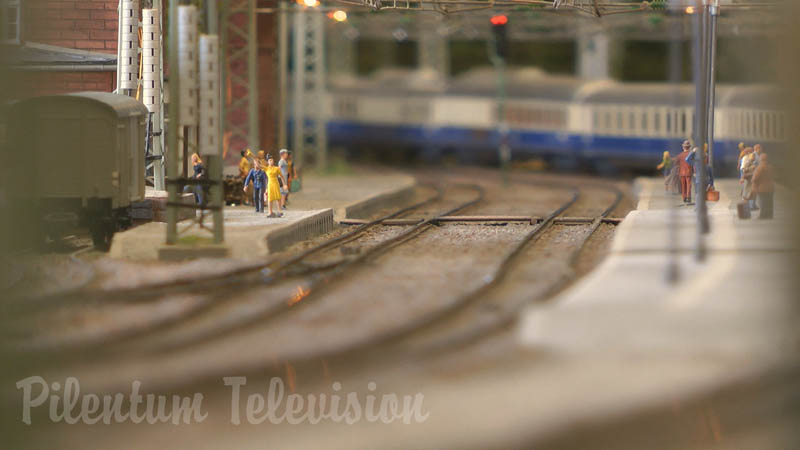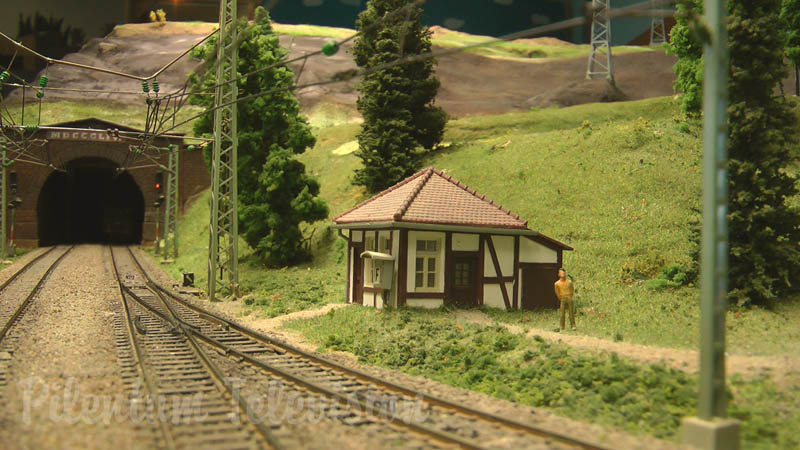This model train video is about a large private model railroad layout in Germany made by the Eisenbahnfreunde Kahlgrund. On the contrary to many other miniature worlds, which are presented on Pilentum’s YouTube Channel, this layout is a historically correct scale model of the “Spessart Ramp”. The “Spessart” is a range of low wooded mountains in Germany. The highest elevation is at approximately 600 meters above ground. So the “Spessart Ramp” is a railroad line with one end higher than the other. For trains crossing the “Spessart Region”, the ramp enabled the difference in height to be overcome.
The original railroad line was opened in October 1854 by the Royal Bavarian State Railways. In keeping with the philosophy for railroad construction at that time, it was decided that the way to cope with large differences in height was the construction of a relatively short, steep section of railroad lines. Furthermore, it was decided, to haul trains up the incline with the aid of pusher engines. A bank engine or banking engine or helper engine, colloquially known as a “banker” in Great Britain and Australia or as a “pusher engine” in the United States, is a locomotive that temporarily assists a train that requires additional power or traction to climb a gradient. Sometimes those locomotive-hauled trains are named “push-pull trains”, especially a long one, may have a locomotive on both ends so that there is always one locomotive pushing and one locomotive pulling.
These helper locomotives are called “Postrk nebo nezavěšený postrk na konci vlaku” in the Czech Republic, “Työntöveturi” in Finland, “Popych” or “Lokomotywa pracująca na popychu na końcu pociągu popychanego” in Poland, “補助機関車” or “後補機” in Japan, “Popych lub lokomotywa pracująca na popychu na końcu pociągu popychanego” in Poland, “Локомотив-толкач (Подталкивающий локомотив) — локомотив в хвосте поезда” in Russia, “Локомотив-штовхач — локомотив в хвості поїзда” in Ukraine, “辅助机车,辅助机车又叫辅机或补机” in China and “輔助機車,輔助機車又叫輔機或補機” in Taiwan.
The helper or pusher locomotive would be brought up behind the last car of the train. When the train no longer required assistance, the helper or pusher locomotive would slow, then reverse and coast back down the grade to its siding at the bottom of the grade. In Germany, from 1854 to 2017 those push-pull trains were used between the city of Laufach in the valley and the “Schwarzkopftunnel” at the top of the mountain. The pusher locomotives are positioned at the rear of the train, in which case they also protected against wagons or coaches breaking away from the train and running back downhill.
However, on the model railroad layout miniature trains arrive at the large station. Then they wait until one of four available helper locomotives ranks behind the train. Together - with the locomotives pulling and pushing - the train departs. The entire operating procedure on this HO scale layout is fully automatic. Trains and locomotives are automatically controlled by the computer (DCC). Even the operation with helper locomotives is automatically controlled. The model railroad control system ensures that the two locomotives do not put too much stress on the cars and the model railway control system checks that the locomotive at the front does more pulling than the locomotive at the rear does pushing.
Pushing or helper locomotives were most widely used during the age of steam. Today, the development of diesel or electric locomotives has eliminated the everyday need in all but a few locations. Helper locomotives were commonly designed to provide extreme power for very short runs. Therefore, those locomotives are most commonly found in mountain divisions, where trains may demand the use of substantially greater motive power. In reality until 2017, helper locomotives were manually controlled on the “Spessart Ramp”, which was still the norm for push engines at the end of freight trains and passenger trains in Europe. To be able to add and remove helper locomotives quickly, which was especially important in Europe due to the high rail traffic density, they were added to the end of the train.


